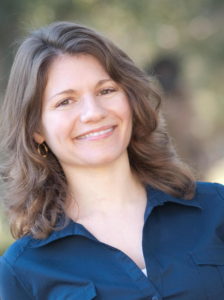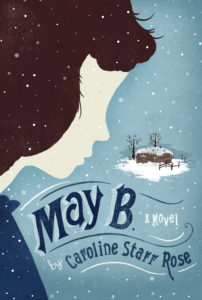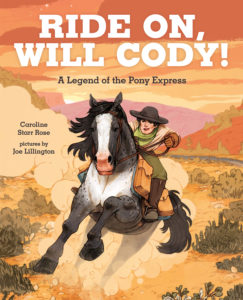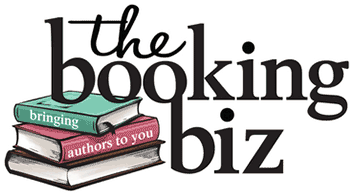Writing is one of the most important subjects for children’s education, but with so many ways to write, it’s also one of the most challenging to teach. That’s why we’re thrilled to have a guest post by our client Caroline Starr Rose discussing the five aspects she’s found are most important…
Thanks, Caroline!

When my school teachers talked about writing, the focus was on product. But how to create a solid final draft was a bit of a mystery. So when my education professor first introduced me to the Writing Process, I was all in. Here was a system every author followed from idea to publication, one I could teach my future students that would lead them to their best writing and would mimic the work of true artists.
What I didn’t know at the time is that writing isn’t as clear cut as that.
If I could chat with my younger teaching self, I’d emphasize these five aspects of writing instead:
Creativity is not linear
The magic recipe I thought I’d discovered in the writing process? It doesn’t exist. Writing is not a simple, linear method. The stages of the writing process aren’t forward-moving set-in-stone steps to check off a list but general guidelines meant to draw the author ever closer to the story she’s trying to tell. Every piece of writing calls for a different journey, requiring a different number of drafts, dead ends, and breakthroughs. The focus, then, shouldn’t be on the process but what each individual piece (and child) needs.

Listen to the world
It’s not easy to jump into a writing session without some preparation. We encourage children to brainstorm before drafting, but for many writers the true work begins before ideas are put to paper. Creatives listen to and observe the world around them, whether that be the slant of sunlight on a quiet afternoon, a conversation taking place in the backseat during carpool, or a paragraph from the newspaper. In listening, we catch details we might otherwise miss, bits and pieces that enrich our lives and work.
I have to confess that sometimes I’d be anxious about students who couldn’t get their ideas flowing in my carefully prescribed brainstorming sessions. But if we invite children to look and listen to the world as writers, they can come to their work with artistic pumps already primed. One simple way to do this is to regularly model the things that make us stop and wonder. Another is to ask kids to keep notebooks where they write, paste, color, and collect ideas or questions that might lead to future projects.
Tinker, explore, create, play!
I love writing, but it’s not easy. Even the word “write” can feel like a heavy burden. So I play games with myself to keep moving and focus only on the next scene or paragraph rather than the entire book. I tell myself I’m not writing, but simply exploring an idea or playing with language that might someday become a story.
Students can feel tremendous pressure when asked to write. Maybe it’s not their strong suit. Maybe they don’t know how to tackle what’s been asked of them. Or maybe they’re fresh out of ideas. If young writers can be taught to approach their work playfully, not only will the process become less weighty, it will free them to not be so concerned about getting it “right.”
Frustration is part of the process
 We can’t talk about writing without bringing up frustration. All authors hit a rough patch now and then. If kids know ahead of time this a natural part of the process, the experience can be less intimidating, and those moments of frustration might be short lived. Instead of fearing them, tough moments can be seen for what they are: opportunities to go deeper and wider, obstacles that, if faced, will eventually lead to breakthroughs.
We can’t talk about writing without bringing up frustration. All authors hit a rough patch now and then. If kids know ahead of time this a natural part of the process, the experience can be less intimidating, and those moments of frustration might be short lived. Instead of fearing them, tough moments can be seen for what they are: opportunities to go deeper and wider, obstacles that, if faced, will eventually lead to breakthroughs.
Real writing happens in revision
Writing is a mysterious experiment that often cycles back on itself, a journey of trial, error, and serendipity. When an author sells a book, it isn’t finished yet. It must go through multiple rounds of deep revision (big picture changes) with an editor. Up to the very end, the author/ editor team makes small and not so small tweaks to get the story as near perfect as they can get it.
It’s in revision that the real writing happens. Revision means exactly as it sounds—a chance to see the work again. As a young teacher, I didn’t understand how crucial revision was. Cosmetic changes—those small-scale edits that are easy to spot and correct—somehow felt more urgent. I wish I’d known to ask my students the questions I now ask myself after I finish a draft: What is it you’re trying to say? What was your original idea? How has it changed, for better or worse, along the way? What changes need to be made to bring this piece of writing in line with your vision for it?
Sometimes I wish there were a secret formula to follow that would guarantee artistic success. But I’m finding there isn’t just uncertainty in murky creative moments. New ideas and satisfaction can also be discovered there. Let’s not teach our students that writing can be summed up in six simple steps. Let’s instead be courageous enough to allow them to make wrong turns and face frustration as they unearth the heart of their writing, just as a true artist would.
Caroline Starr Rose is the award-winning author of verse novels MAY B. and BLUE BIRDS, picture books OVER IN THE WETLANDS: A HURRICANE-ON-THE-BAYOU STORY and RIDE ON, WILL CODY!, and the historical adventure JASPER AND THE RIDDLE OF RILEY’S MINE. She does presentations on writing, poetry, nature, history and more.
